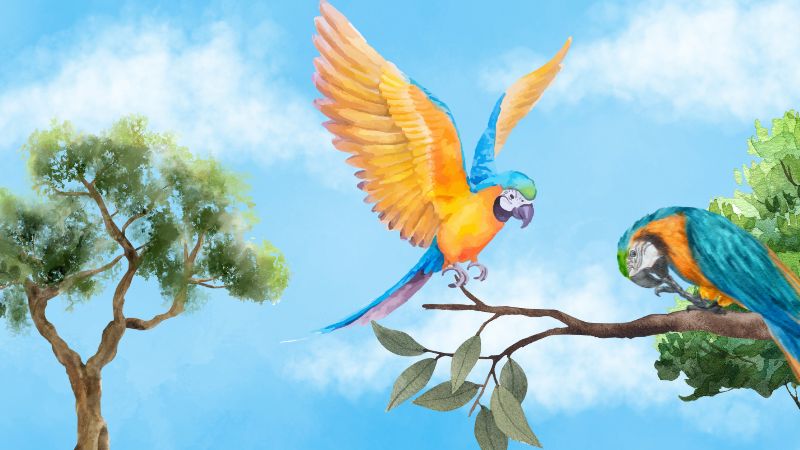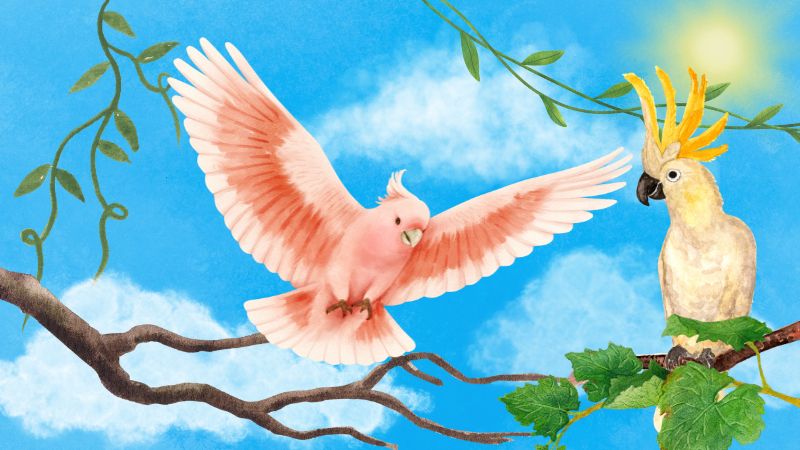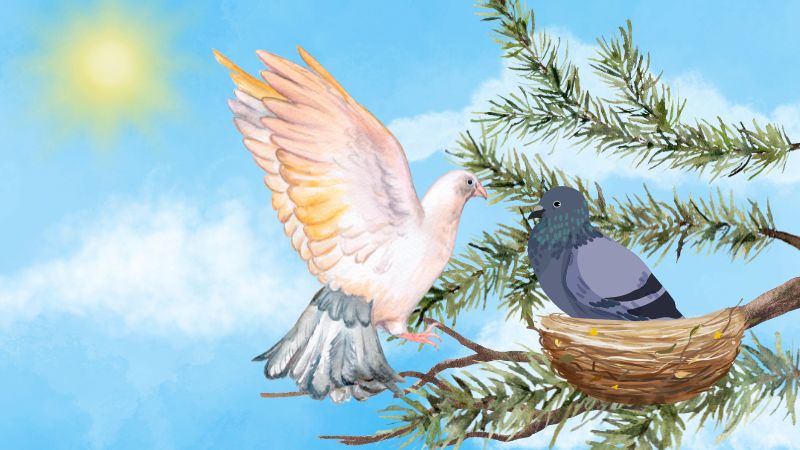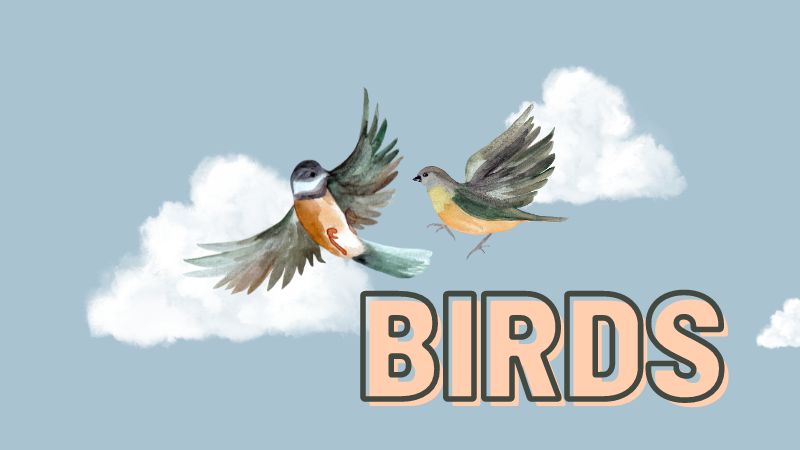Birds are classified within the Kingdom Animalia, making them unequivocally animals. They belong to the Phylum Chordata, which includes animals that have a notochord (a flexible rod-shaped body) at some stage in their development.
More specifically, birds are categorized in the Class Aves, a group that is distinctly characterized by feathers, beak with no teeth, laying of hard-shelled eggs, a high metabolic rate, and a strong yet lightweight skeleton.
Key Takeaways
- Birds are Animals: Classified under the Kingdom Animalia, birds are indeed animals, belonging to the Class Aves, characterized by feathers, beak with no teeth, and laying of hard-shelled eggs.
- Evolutionary Link to Dinosaurs: Birds have evolved from theropod dinosaurs, with Archaeopteryx often cited as a transitional fossil showcasing characteristics of both birds and dinosaurs.
- Unique Biological Features: Birds possess distinctive adaptations such as feathers for flight and insulation, a high metabolic rate, and a lightweight skeletal structure for efficient flight.
- Ecological Importance: Birds play pivotal roles in ecosystems as pollinators, seed dispersers, and natural pest controllers, contributing to biodiversity and ecological balance.
- Conservation Efforts: Protecting bird species and their habitats is crucial due to threats from habitat destruction, climate change, and pollution, highlighting the need for global conservation initiatives.
The Evolutionary Odyssey

The evolutionary lineage of birds is a captivating saga that dates back millions of years to the age of dinosaurs. The consensus among scientists, based on fossil evidence and genetic data, is that birds are the direct descendants of theropod dinosaurs, specifically a group known as maniraptoran theropods.
This connection was cemented with the discovery of Archaeopteryx in the 19th century, an ancient creature that bore both avian and dinosaurian features, bridging the gap between birds and their dinosaur ancestors.
Over millions of years, through the process of natural selection, these theropods underwent gradual transformations, leading to the diverse avian species we see today.
Biological Marvels

Birds exhibit a range of biological adaptations that enable their survival and success in various environments. Feathers, one of the most distinctive features of birds, serve multiple functions including flight, insulation, and display.
The avian skeletal system is adapted for flight with a lightweight yet strong structure; the bones are hollow with air sacs that contribute to a more efficient respiratory system.
Birds also have a unique reproductive system, characterized by the laying of hard-shelled eggs, which protects the developing embryo while allowing gas exchange.
Architects of Ecosystems

Birds play pivotal roles in ecosystems, contributing to the balance and health of the environments they inhabit. They are agents of pollination, seed dispersal, and pest control.
Many bird species are pollinators, feeding on nectar while transferring pollen from one flower to another, thus aiding in plant reproduction.
Others, by consuming fruits, help in the dispersal of seeds, facilitating the growth of new plants and trees.
Birds also contribute to pest control by feeding on insects, reducing the need for chemical pesticides and helping maintain ecological balance.
Guardians of the Avian World

The conservation of bird species has become an imperative task for humanity, as many species face threats from habitat destruction, climate change, pollution, and hunting.
Organizations worldwide are engaged in efforts to protect birds and their habitats, employing strategies such as establishing protected areas, restoring habitats, regulating hunting, and conducting research to better understand avian needs.
Conservation initiatives not only aim to protect birds but also preserve the biodiversity and health of ecosystems globally.
FAQs
Can birds be classified into subcategories within the animal kingdom?
Yes, birds can be further classified into subcategories within the Class Aves based on their physical characteristics, behaviors, and evolutionary history. These subcategories include Orders, Families, Genera, and Species. For example, the Order Passeriformes, or perching birds, is the largest order of birds and includes more than half of all bird species.
How do birds contribute to the control of insect populations?
Birds, especially insectivorous species, play a crucial role in controlling insect populations by consuming large quantities of insects daily. This natural pest control mechanism helps in managing insect outbreaks, which can be harmful to crops and forests. Species such as swallows, warblers, and chickadees are among those that feed extensively on insects.
Are there any birds that cannot fly, and if so, how are they classified?
Yes, there are several species of birds that cannot fly, and they are still classified within the Class Aves. These flightless birds, such as ostriches, emus, cassowaries, kiwis, and penguins, have adapted to their environments in ways that do not require flight.
Their adaptations may include strong legs for running or swimming, and in some cases, wings are used for balance, swimming, or courtship displays rather than for flight.
What is the significance of birds’ migratory patterns in their classification as animals?
Birds’ migratory patterns are a significant aspect of their behavior and survival strategies, reflecting their adaptability as animals within their environments. Migration allows birds to exploit different geographic regions for breeding and feeding, depending on the season.
This behavior demonstrates their complex navigational skills and physiological adaptations to long-distance travel, aspects that are studied within zoology and ornithology.
How do birds’ respiratory systems differ from those of other animals?
Birds have a unique and highly efficient respiratory system that differs significantly from those of other animals, including mammals. Their respiratory system includes air sacs that extend into their bones, allowing for a continuous flow of air through the lungs even when they exhale.
The system provides birds with the high oxygen intake required for flight, showcasing a remarkable adaptation to their active lifestyles.
In what ways have birds adapted to urban environments?
Birds have shown remarkable adaptability to urban environments through various behavioral and physiological changes. Some species have altered their nesting habits, using buildings and other structures as sites for their nests. Others have changed their feeding behaviors to exploit food resources provided by human activity.
Final Words
In answering the question, “Is a bird an animal?” we traverse a journey through scientific classification, evolutionary history, biological characteristics, ecological significance, conservation efforts, and cultural impacts.
Birds, with their ability to soar through the skies, not only captivate our imagination but also remind us of our connection to the natural world and the intricate web of life that sustains our planet. As animals, birds are a testament to the diversity and adaptability of life, inspiring us to appreciate, study, and protect the myriad forms that life takes.
Through understanding and respecting our avian counterparts, we acknowledge the shared planet we call home and the collective responsibility we bear towards its stewardship.








